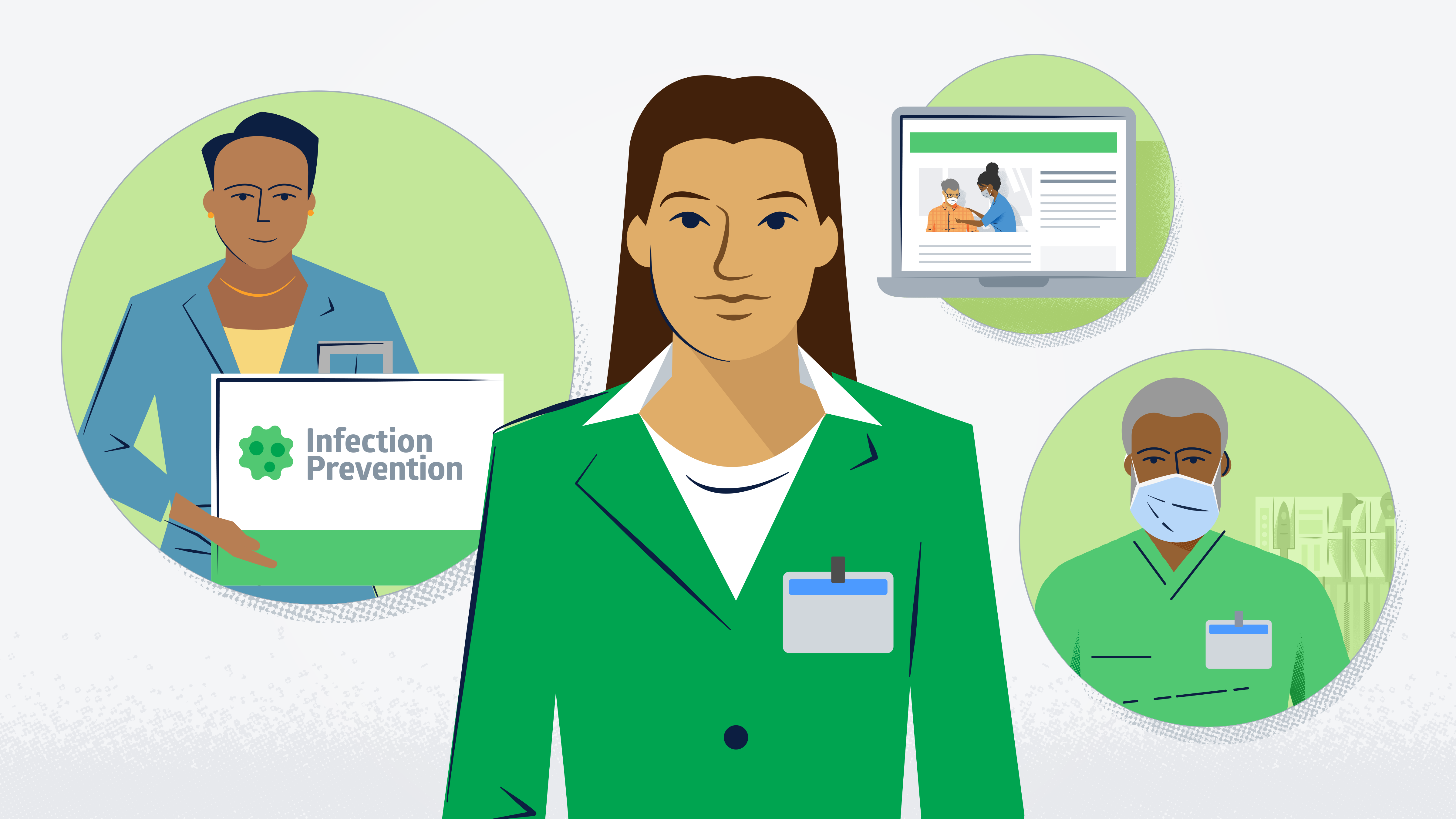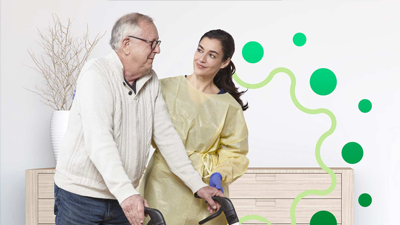How can experts help nursing home staff with HAI prevention?
Learn how to partner inside and outside to build a strong team defense.

You’re working every day to build a strong team defense in the fight against healthcare-associated infections (HAIs). How do you determine weaknesses? To help identify gaps in infection control practices, Medline completed “discovery assessments” with more than 100 long-term care (LTC) providers across the nation in late 2022.
The goal being, once you assess your risk level, you’re better informed and armed to close those gaps through education, training and other viable solutions.
This article is the first in a five-part series on how to address each of the main infection control challenges identified.
So what did the assessment results show? We asked LTC leaders, “How prepared and equipped do you feel your infection preventionist (IP) is to tackle some of the responsibilities?” Here’s what we learned:

Following are tips for making the most of expert insights to create a culture of safety.
Consult with internal experts
Help is available inside and outside your facility, beginning with the director of nursing for staffing levels, HAI knowledge gaps among nurses, areas for improvement in clinical practice, past and current infection prevention and control (IPC) programs, and specific facility specific needs for infection prevention.
- Medical director: Have you spoken with the medical director or attending physician? They can give you an idea of chronic conditions and recent hospitalizations among residents, as well as other medical issues that may make them at higher risk for HAIs.
- Pharmacy director: As leader of your facility’s antimicrobial stewardship program, you can learn a lot from the pharmacy director and collaborate on efforts.
- Regional infection preventionist: Is your facility part of a network of long-term care facilities? There may be a regional IP who is available as a resource. Or, there could be a centralized management group for your network that provides an IP you can consult.
- Health system acute care IP: Can a health system or integrated delivery network claim your facility as a member? Consider tapping an acute care IP from a nearby system hospital for insights and guidance.
Look to the field for help
- APIC: Make sure to join the Association for Professionals in Infection Control and Epidemiology. Read the chat boards. Make the most of your local APIC chapter and find a mentor.
- CDC: Your specialized training should include the Nursing Home Infection Preventionist Training course designed by the Centers for Disease Control and Prevention in collaboration with the Centers for Medicare & Medicaid Services2
- CBIC: Interested in certification? The Certification Board of Infection Control & Epidemiology offers the only Long-Term Care Certification in Infection Prevention (LTC-CIP)3
- AHCA/NCAL: The American Health Care Association/National Center for Assisted Living offers Infection Preventionist Specialized Training for IPs in nursing centers4
Partner with an industry expert
You’re arming yourself with knowledge to share with the team. The basics for infection prevention? Hand hygiene, personal protective equipment (PPE) and environmental services (EVS). Why?
“Hand hygiene, PPE and EVS are vital to addressing all areas of risk and protecting everyone,” says Caryn Arnold, MBA, RN, BSN, CNOR(E), a-IPC, Medline Medical Science Liaison.
When all three parts are done right, everyone is protected from germs on people’s hands and clothing as well as surface and airborne pathogens. How do you put together people, process and products to cover all these areas? By collaborating with an industry partner who offers a comprehensive solution.
Best practice guidance
- New ways to promote consistent practice
- Opportunities to standardize products
- Custom guidance for policy review and development
Education and training
- Online education for registered nurses (RNs) and certified nursing assistants (CNAs)
- Facility-led education through train-the-trainer modules, including pre-built kits with presentations, posters, a video library, engaging activities and knowledge assessments
- Private, speaker-led clinical presentations for RNs, CNAs, EVS staff, family members and volunteers
System of products
- Cleaning and disinfection tools
- Hand hygiene essentials
- PPE for every situation
“This unified approach helps break down silos and hold everyone accountable for infection prevention,” says Arnold.
Key takeaway
Infection prevention in long-term care settings is challenging every day. When you partner with internal and external experts, start with the basics and use a comprehensive solution, you’ll be on your way to a strong team defense against HAIs. Stay tuned for the second installment of this article series.
References:
- Medline 2022 Long-Term Care Discovery Assessment Findings. Data on file.
- CDC. Nursing Homes and Assisted Living (Long-Term Care Facilities [LTCFs])/Infection Prevention Training. Retrieved February 3, 2023, from Infection Prevention Training | LTCF | CDC.
- CBIC. About the Long-Term Care Certification in Infection Prevention (LTC-CIP).Retrieved February 3, 2023, from Long-Term Care Certification (cbic.org).
- NCAL. Infection Preventionist Specialized Training – IPCO Version 2. Retrieved February 3, 2023, from AHCA Education: Infection Preventionist Specialized Training – IPCO Version 2 (ahcancal.org).





